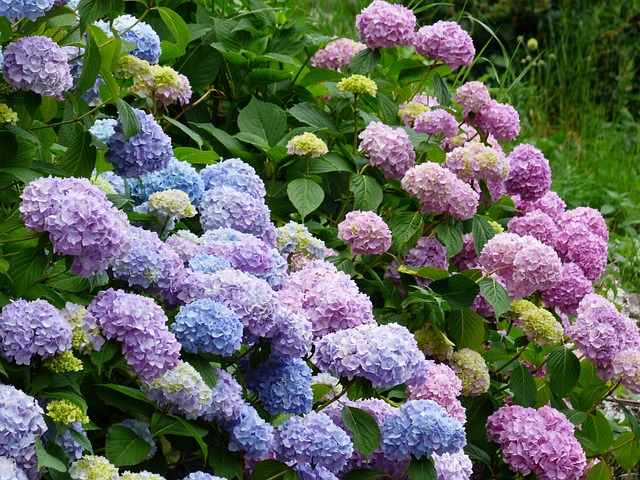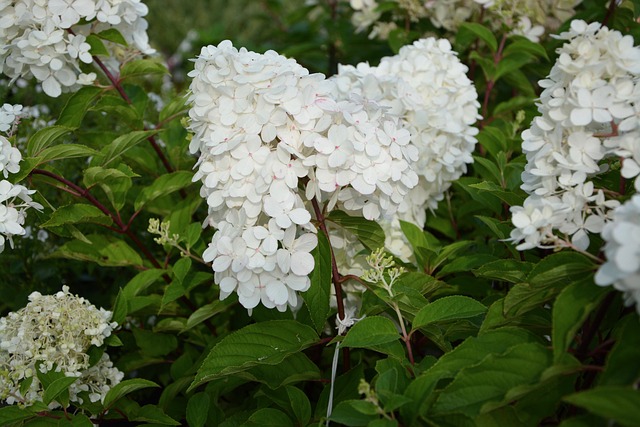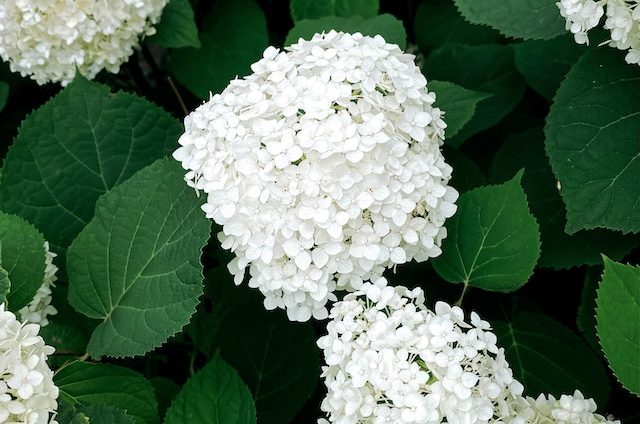Definitive Guide for Pruning Hydrangeas
When and how should you prune your hydrangeas? Keep reading for the complete hydrangea pruning guide.
“When should I prune my hydrangeas?” This is a question that I hear all the time. Many people claim that hydrangeas do not flower the year after they are pruned. You may have heard things like “Hydrangeas flower on old wood, so you should not prune them.” Or, “Hydrangeas flower on new wood, so pruning them will negatively affect flowering.” Here is the truth: pruning hydrangeas is good and they will flower that same year.
Pruning hydrangeas is completely dependent on the species of hydrangea being pruned. There are several species of hydrangea: Hyd. macrophylla, Hyd. paniculata, Hyd. quercifolia, Hyd. arborescens. There are a few other species that have been omitted. 99% of hydrangeas that I have seen in my career belong to one of these four species. Therefore, it is imperative to know the species of hydrangea before pruning. Michael Dirr’s Manual of Woody Landscape Plants is one of my favorite books. It is my go to resource for correctly identifying woody plants. I recommend that ALL avid gardeners purchase this book. If you are not ready to spend $100+ on a gardening book, check your local library, or keep reading this article.
Learning these three leaf base shapes will be helpful before trying to identify your hydrangeas:

Hydrangea macrophylla (Bigleaf Hydrangea)

Identification:
Hydrangea macrophylla is the most common hydrangea that I see in the landscape. However, others are becoming more frequent. To identify this species of hydrangea, look for a serrated leaf attached to a short petiole, ½”-1 ½”. The leaf base is acute and the margin is serrated, but more obtusely serrated than that of the smooth hydrangea, Hydrangea arborescens.
Typically these Hydrangea macrophylla produce a light blue or pink flower. There are some more exotic cultivars with more saturated color.
The buds on the stem of Hydrangea macrophylla will be large and noticeable, about ¼”-½”.
Pruning:
Hydrangea macrophylla bear flowers on the previous season’s wood. They will flower without pruning. However, if you want to reduce the size or shape of the bush, prune in mid-spring. Cut back weak and thin shoots. Remove 1-2 of the oldest stems, cutting it back to the base of the plant. Remove the old flower heads by trimming the stems back to a pair of fat buds 12” or less from the old flower.
Hydrangea paniculata (Panicle Hydrangea)

Identification:
Hydrangea paniculata is a species that can generally withstand more direct light than bigleaf and smooth hydrangea. Their flowers are more panicle shaped when compared to the globe shaped flowers of Hydrangea macrophylla and Hydrangea arborescens.
The leaf of Hydrangea paniculata is more elliptical in shape than that of Hydrangea macrophylla or Hydrangea arborescens. The base of the leaf is acute unlike the base of Hydrangea arborescens.
The final distinguishing factor that I use to identify Hydrangea paniculata is the very tiny, almost unnoticeable buds at the leaf axils. Both smooth hydrangea and bigleaf hydrangea have large, noticeable buds along their stems.
Pruning:
Hydrangea panicuata bloom on new season’s growth. Pruning is not necessary, but plants flower much better if pruned back to a woody framework each year. Prune this species of hydrangea in early spring, before there is any new growth.
Each year, prune the previous season’s growth back to the lowest set of healthy buds. Remove any dead or damaged branches.
Hydrangea quercifolia (Oakleaf Hydrangea)

Identification:
Hydrangea quercifolia is the easiest species of hydrangea to identify. As the name implies, the leaves of this hydrangea species are deeply lobed and oakleaf shaped, quercis oak and folia leaf.
Pruning:
Hydrangea quercifolia requires minimal pruning. However, if pruning must be done, do so in spring. Look for dead or damaged stems and remove them.
Hydrangea arborescens (Smooth Hydrangea)

Identification:
It is tricky to distinguish Hydrangea aborescens and Hydrangea macrophylla and paniculata. Typically, Hydrangea aborescens will produce white flowers. However, there are some cultivars that produce flowers that blush to pink or red.
When leaves are present, Hydrangea arborescens can be positively identified because of its rounded or cordate leaf base.
Additionally the buds on Hydrangea arborescens are notably larger than the buds on Hydrangea paniculata, about ⅛”-¼”.
The leaf petiole is 1”-3” long, much longer than the stout ½”-1½” petiole of Hydrangea macrophylla. The margin of the leaf is serrated.
Pruning:
Hydrangea arborescens require little maintenance. However, if pruning is desired, they can be pruned similar to hydrangea macrophylla.
Conclusion
Now you know how to identify and prune the most common species of hydrangeas you encounter in the garden. Generally, regular pruning decreases the total number of flowers present on each plant. However, the flowers that do grow will be more beautiful and grand. For more details about pruning and plant care, I highly recommend “Pruning & Training.” This book has helped me regularly in my career as a landscaper. It has general guidelines for proper pruning practices as well as plant specific instructions for over 800 different species of plants.
